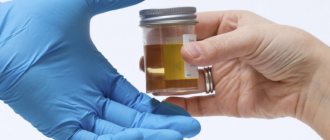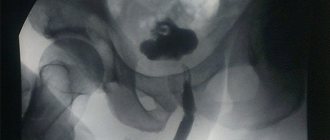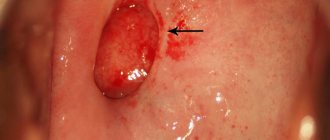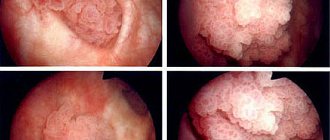Diphtheria
Whooping cough
Colpitis
Thrush
Fungus
11682 03 November
IMPORTANT!
The information in this section cannot be used for self-diagnosis and self-treatment.
In case of pain or other exacerbation of the disease, diagnostic tests should be prescribed only by the attending physician. To make a diagnosis and properly prescribe treatment, you should contact your doctor. We remind you that independent interpretation of the results is unacceptable; the information below is for reference only.
: indications for use, rules for preparing for the test, interpretation of the results and normal indicators.
Why do you need an antibiotic sensitivity test?
Microorganisms in relation to a specific type of antibiotic can be characterized as sensitive, conditionally resistant and resistant. Sensitive pathogens are those that are suppressed by the recommended doses of the antibacterial drug. Conditionally resistant require an increase in dose for suppression. The activity of resistant pathogenic microorganisms is not suppressed even by increased doses of antibiotics.
The sensitivity of microflora to antibiotics is individual: in different people, bacteria can react to the same antibiotics differently. Therefore, prescribing antibacterial drugs based only on the average statistical picture does not always give the desired therapeutic effect. Meanwhile, any antibiotic is a serious remedy that has side effects. In particular, when it is used, not only pathogenic bacteria die, but also beneficial microorganisms. A situation may arise when an antibiotic destroys beneficial microflora, but the causative agent of the disease is not harmed - due to its resistance to this antibiotic.
To ensure the effectiveness of the course of antibacterial therapy, the doctor must be sure that the antibiotic he prescribes will actually cope with the identified causative agent of the disease. This is why an antibiotic sensitivity test is needed.
When is an antibiotic sensitivity test prescribed?
An analysis of the sensitivity of microflora to antibiotics is prescribed if necessary:
- determine the most effective drug. Most often, an antibiotic sensitivity test is prescribed for the treatment of STDs, but the need for it may also arise in the treatment of other infectious diseases;
- avoid “accustoming” of pathogenic microorganisms to the antibiotic - in cases of repeated use of antibacterial therapy for a limited period of time;
- replace one drug with another, for example, in the event of an allergic reaction.
When should you get tested?
Many sexually transmitted infections can be asymptomatic, without disturbing the carrier, but having a detrimental effect on body functions. Transmitted and untreated diseases can develop infertility or develop into a chronic, difficult-to-treat form.
And yet, certain complaints often arise that require you to consult a doctor for examination.
Symptoms of sexually transmitted infections in women:
- Dryness, discomfort, pain during intercourse
- Enlarged lymph nodes (pain, swelling in the groin area)
- Menstrual irregularities
- Itching sensation in the genital area and/or perineum
- Redness, skin irritation, and rash (including all over the body)
- Unusual discharge from the genital tract, strong, unpleasant odor
- Pain, burning during urination
- Swelling of the external genitalia.
Symptoms of sexually transmitted infections in men:
- appearance of blood particles in semen
- increased urge to urinate
- slight increase in body temperature
- sexual dysfunction (eg, ejaculation)
- pain in the genitals, scrotum
- unusual discharge from the penis, possible unpleasant odor
- rash on the genitals.
Testing to detect sexually transmitted infections is necessary for both partners, even if the second does not exhibit any symptoms.
How is antibiotic sensitivity testing done?
Various biological material is used for analysis - depending on the disease, it can be urine, feces, a smear (from the vagina, urethra, from the back of the throat), breast milk, sputum, saliva, etc.
Antibiotic sensitivity testing refers to cultural (microbiological) tests. Therefore, its other name is antibiotic sensitivity testing.
.
The most widely used method is the disc-diffusion method.
carrying out analysis. In accordance with this method, pathogenic microorganisms are inoculated into a nutrient medium. Discs soaked in antibiotics are placed on top. After which the crop is placed in a thermostat for 16-18 hours. The result will show how much a particular antibiotic is able to cope with these bacteria.
The “Family Doctor” also uses an automatic Vitek analyzer to analyze sensitivity to antibiotics, which ensures high standardization and computerization of the study.automatic analyzer
Bacteriological culture or tank culture from the urethra is
Culture: is it possible to identify candida?
Patients often ask whether fungal diseases can be detected by culture.
It should be noted that to identify the fungus, you should use special media on which it grows.
It is useful to perform the study if you need to determine the sensitivity of candida to drugs.
Cultures from the urethra in women
The proximity of a woman's genital organs to the external opening of the urethra determines that urethritis is often included in the program of genital tract infections in women.
Therefore, a smear of urethral discharge and its culture are also relevant for women.
In women, it is advisable to take bacterial cultures after about 4-8
In women, it is advisable to take bacterial cultures approximately 4-8 days after the end of menstruation.
The ideal time to take a smear would be in the morning, before the reproductive organs are toileted.
If bacteriological culture is carried out on a pregnant woman, then it makes absolutely no difference on what day the culture is taken.
To take the culture, a short and thin probe is used, as well as a special vaginal speculum.
It usually takes about seven to ten days to receive analysis results.
Culture from the urethra: how to prepare for a woman
Let's look at how to properly prepare for seeding in women.
It should be understood that any bacterial study requires some preparation.
Before sowing:
- In the evening, perform normal hygiene procedures without using soap or antibacterial products
- Before sowing, douching or similar procedures should not be performed.
- Antibiotics should be discontinued 3-4 weeks before the study
- If you are using any medications, consult your doctor about stopping them
Control analysis after treatment, culture from the urethra
After performing any treatment for a bacterial or fungal infection, follow-up studies should be performed.
Bacterial culture is ideal for this purpose.
Remember! Monitoring should be performed no earlier than two to three weeks after the end of the course of therapy.
If you are unsure when to perform follow-up tests, consult your doctor.
Why is there no bacterial growth in the culture tank from the urethra?
There is a situation where the seeding performed does not give the desired result.
Let's look at what could be the reason for this situation.
There may be no bacterial growth in the following situations:
- 1. The patient is taking a course of antibacterial drugs;
- 2.For some time after the end of the course of treatment;
- 3. Incorrect preparation for sowing;
- 4. Incorrect collection of material for sowing.
Normally, bacterial culture in women may show a slight increase in conditional flora.
Pathogenic flora should not be determined.
Cultures from the urethral tract in men should normally be sterile.
In the absence of pathogenic strains, the result may indicate that their growth is undetectable.
In some laboratories, opportunistic bacteria are not noted in the test results, even if they were identified.
How correctly we are talking about a small amount of conditionally pathogenic flora.
When is a urethral culture prescribed after taking antibiotics?
The patient took a course of antibiotic therapy; it is advisable to prescribe a culture no earlier than 3-4 weeks after the end of treatment.
If the culture is taken earlier, the results may not be accurate.
Sowing: deadline
Patients often ask: how long does a urethral culture take and when will the result be ready?
It takes some time for colonies of bacteria to grow.
The usual time it takes for this is from 3 to 7 days.
Therefore, 7–8 days are usually indicated as the readiness period for bacterial inoculation.
If significant growth is not obtained, the results will be ready sooner.
Which doctor prescribes urethral culture?
A bacterial culture is prescribed by a urologist.
If a woman comes for an appointment, she can be examined by a gynecologist.
The same specialist prescribes and performs culture collection for women.
How to decipher the sowing result
As a result, the Form usually indicates the name of the identified bacteria and their quantity.
Important! The result obtained is not a diagnosis.
Decoding tests is always the prerogative of the doctor.
Bacterial culture: cost
What is the cost of urethral culture?
The usual cost of culture may vary depending on the clinic and test parameters.
Cultures to determine sensitivity to a wide range of drugs will cost more.
In our paid KVD you can take a culture from the urethra
In our paid KVD you can take a culture from the urethra according to European standards.
Biological material must be delivered to the laboratory in special containers very quickly, and then the inoculation is placed in a favorable nutrient medium.
We have everything you need to carry out bacterial sowing.
And the proximity of the laboratory to the doctor’s waiting room allows the material to be inoculated in the optimal time.
This procedure will be easy and painless for you.
Our specialists will provide you with the most accurate examination results in a timely manner.
In our paid KVD, bacteriological culture will not leave bad memories.
If you need to do a culture from the urethra, contact the author of this article - a urologist, venereologist in Moscow with 15 years of experience.
Preparing for antibiotic sensitivity testing
It is necessary to comply with standard requirements for the delivery of each type of biological material:
- When passing urine, the middle portion is collected (the first portion of urine is flushed into the toilet). The urine is collected in a sterile container. Before collecting urine, hygiene procedures are required;
- Breast milk is collected before the baby is fed. The first portion of milk from each breast is discarded, the next 0.5-1 ml of milk from each breast is collected in a separate sterile container;
- before taking a swab from the throat and nasopharynx, you should not eat (for 4-5 hours before taking the test);
- if you are taking a smear from the vagina, urethra or prostate secretion, it is advisable to abstain from sexual activity (for 1-2 days before the test).
When is a urethral smear taken?
A urethral swab (or scraping) is a common method in clinical research. Its purpose is to determine the infectious or inflammatory process in the genitourinary system, pathogenic bacteria. This analysis is taken from both men and women. In this case, a smear from the urethra (urethra) can be taken as if some disease is suspected, for the purpose of prevention during a routine examination by a urologist or gynecologist.
The procedure for taking scrapings is different for men and women. In men, it can be accompanied by discomfort and even pain. It consists of inserting a special applicator, tampon or medical probe into the urethral canal. Despite the fact that the instrument is small, it is inserted to a depth of up to 5 cm, and then rotated several times in the canal. This is necessary so that epithelial cells remain on the instrument. It is contact with the instrument that causes discomfort both during the procedure and for some time after it.
In women, the test is taken from the urethra using a finger. The doctor inserts a finger into the patient's vagina and then gently presses the back surface of the urethra. During this manipulation, material suitable for research is separated from the urethra. It is collected using a special instrument and sent to the laboratory.









